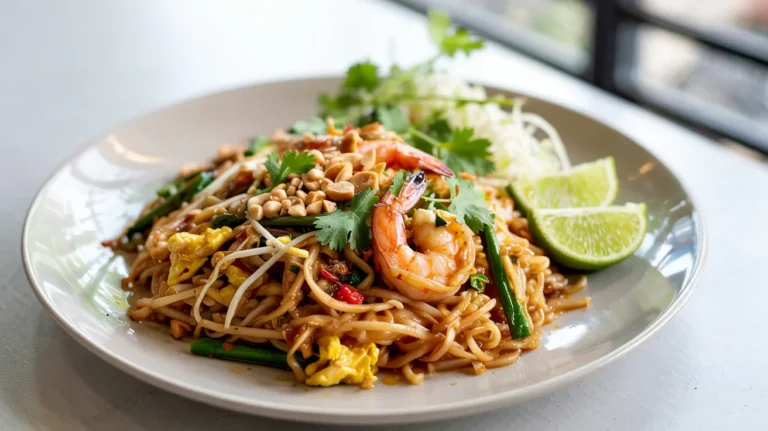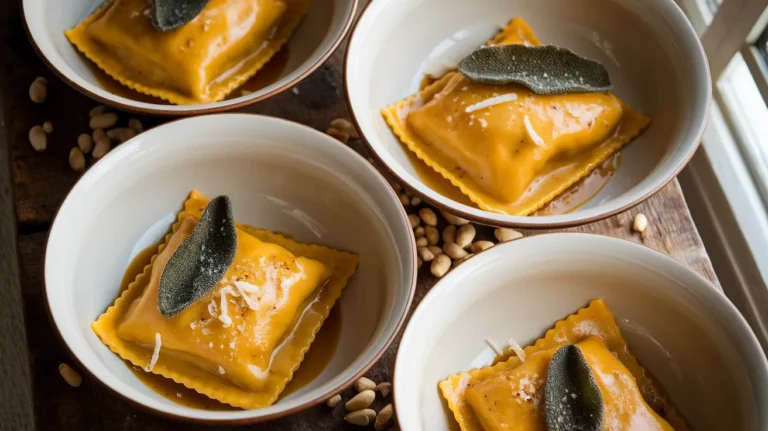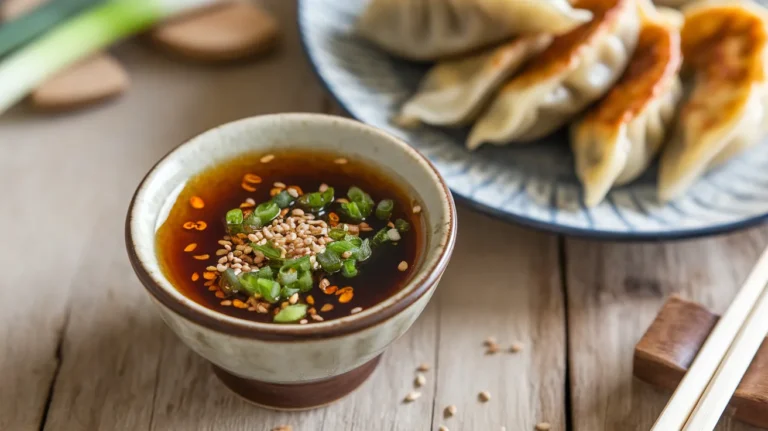This creamy sauce for kabobs dipping brings Mediterranean magic to your grilled skewers with just 15 minutes of simple prep work. Our step-by-step sauce for kabobs dipping guide walks complete beginners through creating restaurant-quality flavor using everyday ingredients like Greek yogurt, fresh herbs, and aromatic spices that transform ordinary kabobs into memorable meals.
Recipe Info Bar
SERVES: 4 | PREP: 15 MIN | COOK: 5 MIN | TOTAL: 20 MIN
Ingredients
Base Ingredients
| Ingredient | Amount | Notes |
|---|---|---|
| Greek yogurt (plain) | 1 cup | Full-fat preferred |
| Mayonnaise | 3 tablespoons | For richness |
| Lemon juice | 2 tablespoons | Fresh squeezed |
| Garlic cloves | 3 medium | Minced fine |
Herbs & Spices
| Ingredient | Amount | Notes |
|---|---|---|
| Fresh dill | 2 tablespoons | Chopped |
| Fresh parsley | 2 tablespoons | Chopped |
| Ground cumin | 1 teaspoon | Toasted preferred |
| Paprika | 1/2 teaspoon | Sweet variety |
| Salt | 1/2 teaspoon | Sea salt |
| Black pepper | 1/4 teaspoon | Freshly ground |
Optional Enhancers
| Ingredient | Amount | Purpose |
|---|---|---|
| Olive oil | 1 tablespoon | Extra smoothness |
| Cucumber | 1/4 cup | Diced small |
| Red onion | 1 tablespoon | Minced fine |
Step-by-Step Sauce for Kabobs Dipping Instructions
Phase 1: Essential Preparation (8 minutes)
Step 1: Set Up Your Workspace Place all ingredients on your counter in the order you’ll use them. Get out a medium mixing bowl (glass or stainless steel works best), a wire whisk, measuring spoons, and a rubber spatula. Having everything ready prevents mistakes and makes the process smooth for beginners.
Step 2: Bring Yogurt to Room Temperature Remove the Greek yogurt from the refrigerator and let it sit on your counter for 10-15 minutes. Cold yogurt is thick and hard to mix, which can create lumps in your finished sauce. You’ll know it’s ready when you can easily stir it with a spoon without resistance.
Step 3: Prepare Fresh Lemon Juice Roll 1 large lemon firmly on your counter while pressing down with your palm. This breaks down the internal membranes and releases more juice. Cut the lemon in half and squeeze through a fine-mesh strainer into a small bowl to catch seeds. You need exactly 2 tablespoons of fresh juice.
Step 4: Master the Garlic Preparation Lay each garlic clove flat on your cutting board. Place the flat side of a large knife over the clove and give it a firm whack with your palm. This crushes the garlic and makes the papery skin easy to remove. Peel away all the skin, then check for any green sprouts in the center of each clove and remove them (they taste bitter). Mince the garlic as finely as possible using a rocking motion with your knife.
Step 5: Prepare Fresh Herbs Like a Pro Wash dill and parsley under cold running water, then shake off excess moisture. Lay the herbs on paper towels and pat completely dry. Wet herbs will make your sauce watery. Gather the herb leaves into tight bundles and use kitchen shears to snip them into small pieces, or stack the leaves and slice them thinly with a sharp knife.
Phase 2: Building Your Sauce Base (5 minutes)
Step 6: Combine Yogurt and Mayonnaise Add the room-temperature Greek yogurt to your mixing bowl. The yogurt should feel soft and creamy, not cold and stiff. Add the mayonnaise directly to the yogurt. Using your wire whisk, stir in small circles starting from the center and working outward. Keep whisking until the mixture looks completely smooth with no white streaks or lumps visible.
Step 7: Add Lemon Juice Gradually Pour half the lemon juice into your yogurt mixture while whisking constantly. This prevents the yogurt from curdling (separating into chunky bits). You should see the mixture become slightly thinner and brighter in color. Add the remaining lemon juice and whisk until fully incorporated. The sauce should smell fresh and tangy.
Step 8: Incorporate Garlic Properly Add your minced garlic to the yogurt mixture and stir it in completely. Now here’s the beginner secret: let this mixture sit untouched for 3-5 minutes. This resting time allows the raw garlic to mellow slightly and prevents an overpowering bite in your finished sauce for kabobs dipping.
Phase 3: Spice Integration and Flavor Building (4 minutes)
Step 9: Toast Cumin for Maximum Flavor Heat a small, dry skillet over medium heat for 30 seconds. Add the ground cumin and stir constantly with a wooden spoon for 30-45 seconds. You’ll smell a nutty, warm aroma when it’s ready. Remove from heat immediately and let cool for 1 minute. This step transforms bland ground cumin into aromatic, complex flavor.
Step 10: Season Your Sauce Foundation Add the toasted cumin, paprika, and black pepper to your yogurt base. Start with only half the salt (1/4 teaspoon). Different brands of Greek yogurt have varying salt levels, so you’ll adjust this to taste later. Whisk everything together until you see even color distribution with no spice clumps.
Step 11: Fold in Fresh Herbs Gently Switch from your whisk to a rubber spatula. Add all the chopped dill and parsley to your sauce. Instead of stirring vigorously, use a gentle folding motion: slide the spatula down one side of the bowl, across the bottom, and up the other side, then rotate the bowl slightly and repeat. This preserves the herbs’ bright green color and prevents them from getting bruised and muddy-looking.
Phase 4: Final Touches and Texture Perfection (3 minutes)
Step 12: Add Richness with Olive Oil Drizzle the olive oil into your sauce while stirring slowly with your spatula. The oil creates a silky texture and helps the sauce cling to kabobs instead of sliding off. You should notice the sauce becoming slightly more glossy and smooth.
Step 13: Optional Texture Additions If using cucumber, first dice it into tiny pieces (no bigger than 1/4 inch). Place the diced cucumber in a small strainer, sprinkle with a pinch of salt, and let sit for 5 minutes to draw out excess water. Pat dry with paper towels before adding to your sauce. For red onion, mince it as finely as possible to avoid overwhelming chunks.
Step 14: Taste and Perfect Your Sauce This is the most important step for beginners. Dip a clean spoon into your sauce and taste it. The flavor should be creamy, tangy, and well-balanced. Add the remaining 1/4 teaspoon salt if needed. If it tastes too thick, add lemon juice 1 teaspoon at a time. If it needs more brightness, add more lemon juice. If it needs more richness, add another tablespoon of mayonnaise.
Step 15: Final Rest and Serve Cover your finished sauce for kabobs dipping and refrigerate for at least 15 minutes before serving. This resting time allows all the flavors to blend and develop. The sauce will thicken slightly as it chills. Remove from refrigerator 5 minutes before serving for best consistency and flavor.
Beginner’s Guide to Perfect Sauce for Kabobs Dipping
Why Each Ingredient Matters
Greek yogurt provides the creamy base and tangy flavor that makes this sauce special. Mayonnaise adds richness and prevents the yogurt from being too tart. Fresh lemon juice brightens all the other flavors and adds essential acidity. Garlic gives the sauce its savory depth, while fresh herbs provide color and Mediterranean authenticity.
Temperature and Timing Tips
Room temperature ingredients mix better and create smoother texture. Cold yogurt can become lumpy when mixed with acidic lemon juice. The 15-minute resting period allows flavors to develop properly, making your sauce for kabobs dipping taste like it came from a restaurant.
Chef’s Notes
Consistency Control: Your finished sauce should coat the back of a spoon but still be pourable. If it’s too thick, thin with water or lemon juice one teaspoon at a time.
Make-Ahead Benefits: This sauce for kabobs dipping tastes even better after sitting for 2-4 hours, allowing all the flavors to marry and develop complexity.
Fresh Herb Storage: If you have leftover herbs, wrap them in damp paper towels and store in the refrigerator for up to one week.
Garlic Intensity: For milder garlic flavor, use only 2 cloves or soak minced garlic in cold water for 10 minutes before adding to the sauce.
Nutrition Box (Per Serving)
- Calories: 95
- Protein: 6g
- Carbohydrates: 5g
- Fat: 7g
- Fiber: 1g
- Sugar: 4g
Creative Sauce for Kabobs Dipping Variations
Spicy Mediterranean Version
Add 1 tablespoon harissa paste or 1/2 teaspoon red pepper flakes for heat. This variation pairs perfectly with lamb or beef kabobs and adds warming North African spices.
Cool Cucumber Tzatziki Style
Increase cucumber to 1/2 cup and add 1 tablespoon fresh chopped mint. Always salt and drain the cucumber first to prevent watery sauce.
Smoky Chipotle Twist
Replace regular paprika with 1 teaspoon chipotle powder for Mexican-inspired flavor. This works especially well with chicken and pork kabobs.
Herb Garden Version
Add 2 tablespoons each of chopped chives and fresh oregano for an intensely herbal sauce. Similar to our sauce for nuggets, this creates a sophisticated flavor profile that impresses guests.
Storage & Reheating Your Sauce for Kabobs Dipping
Refrigeration: Store covered in an airtight container for up to 5 days. The flavors actually improve after the first day as everything blends together.
Freezing: Never freeze yogurt-based sauces as they separate and become grainy when thawed.
Serving Temperature: Remove from refrigerator 10-15 minutes before serving for optimal flavor and smooth consistency.
Freshness Indicators: The sauce should smell fresh and tangy. If it develops any sour or off odors, discard it immediately.

Troubleshooting Your Sauce for Kabobs Dipping
Problem 1: Sauce Turned Out Too Thick
What Happened: Cold ingredients or too much yogurt created a paste-like consistency. How to Fix: Add warm water, lemon juice, or olive oil one teaspoon at a time while whisking until you reach desired consistency. Prevention: Always use room temperature yogurt and measure ingredients carefully.
Problem 2: Overwhelming Garlic Flavor
What Happened: Too much garlic or garlic wasn’t prepared properly. How to Fix: Add more yogurt and mayonnaise to dilute the garlic. A pinch of sugar can also help balance strong garlic. Prevention: Remove green sprouts from garlic cloves and let minced garlic sit in the mixture for proper mellowing time.
Problem 3: Sauce Separated or Looks Curdled
What Happened: Cold yogurt was mixed too quickly with acidic lemon juice. How to Fix: Whisk vigorously while bringing to room temperature. If still separated, start over with room temperature yogurt. Prevention: Always use room temperature dairy ingredients and add lemon juice gradually while whisking.
Problem 4: Bland or Flat Flavor
What Happened: Not enough salt, acid, or herbs to balance the creamy base. How to Fix: Add salt gradually, increase lemon juice for brightness, or boost fresh herbs. Taste after each addition. Prevention: Taste and adjust seasonings in small increments rather than adding large amounts at once.
Problem 5: Watery Consistency
What Happened: Wet herbs or cucumber released moisture into the sauce. How to Fix: Strain through fine-mesh sieve or add more Greek yogurt to thicken. Prevention: Always pat herbs completely dry and salt cucumber before adding to remove excess moisture.
Equipment Essentials for Beginners
- Medium mixing bowl (2-quart capacity, glass or stainless steel)
- Wire whisk (medium size for smooth blending)
- Rubber spatula (for gentle folding without damaging herbs)
- Sharp chef’s knife (8-inch for efficient herb chopping)
- Cutting board (separate one for garlic to prevent flavor transfer)
- Measuring cups and spoons (dry and liquid measures)
- Small skillet (for toasting spices)
- Fine-mesh strainer (for lemon juice and potential sauce fixing)
Complete Shopping List
Dairy Section
- Greek yogurt, plain, full-fat (32 oz container)
- Mayonnaise (small jar if you don’t have it)
Produce Section
- Fresh lemons (2 large for juice)
- Fresh garlic (1 head)
- Fresh dill (1 package)
- Fresh parsley (1 large bunch)
- Cucumber (1 medium, optional)
- Red onion (1 small, optional)
Spice Aisle
- Ground cumin (small container)
- Sweet paprika (small container)
- Sea salt (if needed)
- Black peppercorns (for grinding fresh)
Oil Section
- Extra virgin olive oil (small bottle if needed)
Success Secrets for Perfect Sauce for Kabobs Dipping
1. Temperature Matters Most: Room temperature ingredients blend smoothly and prevent lumps. Set dairy products out 15-20 minutes before starting your sauce preparation.
2. Fresh Herb Technique: Completely dry herbs prevent watery sauce. Roll them in paper towels and squeeze gently to remove all moisture before chopping.
3. Garlic Mastery: Remove the green germ from garlic center for mildest flavor. Let minced garlic sit in the yogurt mixture for 3-5 minutes to mellow harsh edges.
4. Gradual Seasoning: Add salt in small increments and taste frequently. Greek yogurt brands vary in sodium content, so start conservatively and build flavor slowly.
5. Patience Pays Off: Make your sauce for kabobs dipping 2-4 hours ahead of serving time. The resting period allows flavors to develop and creates restaurant-quality depth that impresses every time.
This beginner-friendly sauce for kabobs dipping recipe transforms simple grilled skewers into a memorable Mediterranean feast. Just like our popular sauce for empanadas dipping, it proves that homemade sauces with fresh ingredients always outshine store-bought alternatives. The detailed steps ensure even first-time cooks can create creamy, flavorful results that rival restaurant quality every single time.




